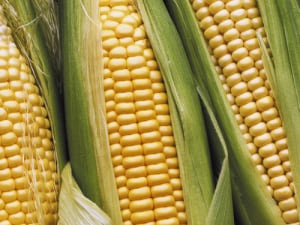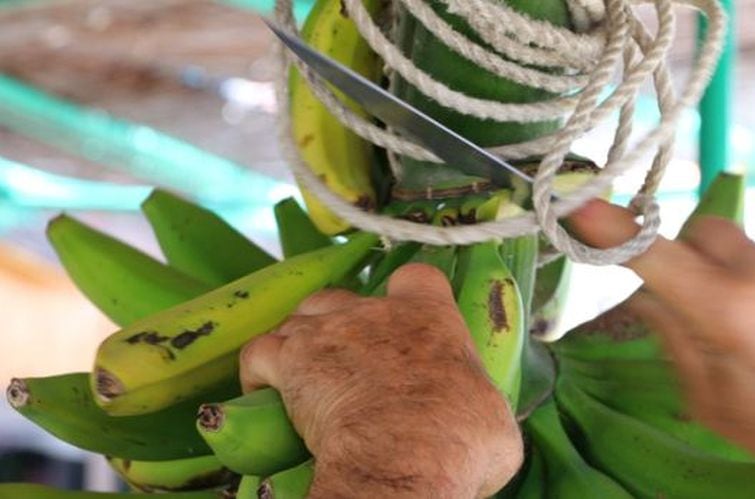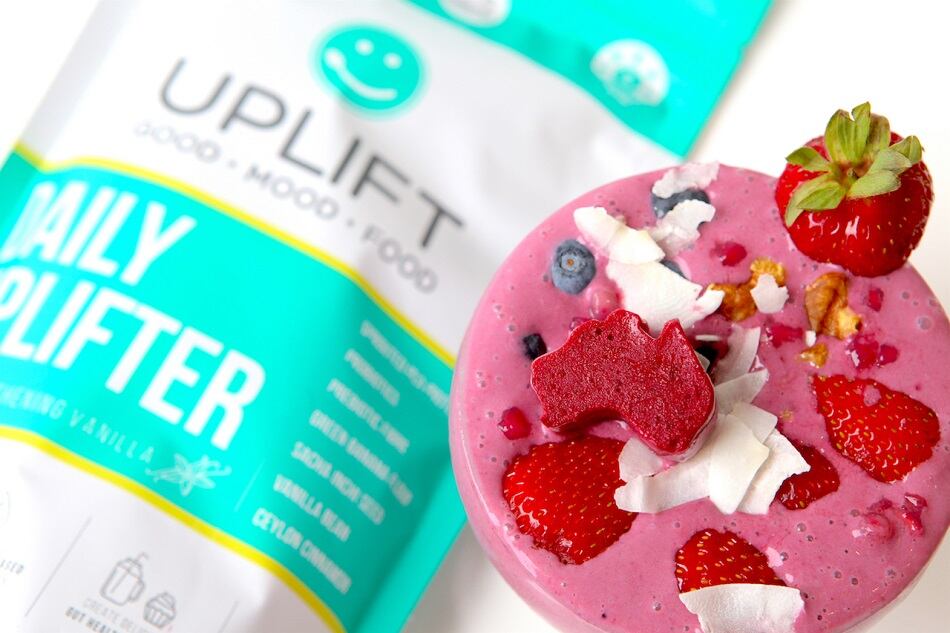Which makes the fact that most consumers are blissfully unaware of resistant starch doubly frustrating, says nutrition communications expert Rhonda Witwer – a chemist who spent years studying the ingredient during her time at Ingredion, and most recently worked at IAG, which supplies green banana flour (another source of resistant starch).
To up the ante, Witwer is now working with several manufacturers to explore creating an association or working group to raise awareness of resistant starch from all sources after launching a website bringing together all the clinical research.
So what exactly is resistant starch?
An insoluble dietary fiber which resists digestion in the small intestine and reaches the large intestine, where it’s fermented, resistant starch is found naturally in many uncooked/unprocessed grains, intact whole grains, underripe bananas, beans and pulses, and cooked and cooled starchy foods (like potato salad, and the rice in sushi), and is the subject of 200+ human clinical trials addressing digestibility, insulin and glycemic response, colonic health and fermentation, satiety and weight.
Given the growing number of Americans with diabetes and pre-diabetes, said Witwer, “What is really exciting to me is that resistant starch can improve insulin sensitivity and blood glucose control. But there is so much research coming out now on things like gut barrier function and immune health.
"An animal study published out of Yale in December demonstrated that resistant starch can heal a leaky gut, and that’s huge.”
Health benefits: Blood sugar control, digestive health, weight management
Studies show that resistant starch can reduce the glycemic (blood sugar) response to foods when it substitutes for flour or other high glycemic carbs in food; that it can reduce the glycemic response to a subsequent meal; increase insulin sensitivity; and enhance first-phase insulin secretion from the pancreas, said Witwer.
Studies also show that resistant starch has prebiotic effects in that it promotes the growth of beneficial bacteria in the gut, and reduces the prevalence and growth of potentially harmful bacteria. It also reduces intestinal pH (a key biomarker for colon health), reduces inflammation, and increases the production of beneficial short chain fatty acids such as butyrate. A growing body of research also suggests it helps maintain the integrity of the intestinal mucosal barrier, triggers beneficial changes in gene expression, and tackles diarrhea, she said.
Finally on the weight management front, research shows that resistant starch can increase insulin sensitivity (the more insulin you need to produce to keep blood sugar under control, the harder it can be to control your weight). Studies also show it can increase fat burning, reduce hunger (by increasing satiety), reduce the caloric density of foods when used to replace regular flour, and reduce body fat.
Few ingredients can boast such a wide array of health benefits, and yet remain under the radar for consumers, said Witwer, who is on a mission to raise awareness.
Resistant starches in the toolbox
So which ingredients are in the toolbox for manufacturers interested in adding resistant starch to their wares, and what is it like to work with?
Some commercially available products include International Agriculture Group’s NuBana green banana flour (RS2); Ingredion’s Hi-maize high amylose resistant corn starch (RS2) and PenFibe modified resistant potato starch (RS4); Cargill/Cerestar’s high amylose resistant cornstarch (RS2), ActiStar resistant tapioca starch (RS3) and ActiStar modified resistant tapioca starch (RS4); MGP Ingredients’ Fibersym chemically modified wheat starch (RS4); and Roquette’s Nutriose resistant corn dextrin.
When it comes to cooking, potato starch and green banana flour lose their resistance when cooked – with the latter working well as a standalone superfruit powder that consumers can add to their own foods and beverages, smoothies and shake mixes, powdered supplements or snack/energy bars that are not baked.
However, high amylose cornstarch and chemically modified RS4 retains their resistant starch through baking processes, said Witwer. High pressure and high temperature food processing (i.e., in cereal manufacturing) causes RS2 resistant starches to lose their resistance, but RS4 varieties can withstand high temperature and high pressure food processing.
Communicating the benefits
But how do you talk to food manufacturers, health professionals, and consumers, about resistant starch?
It depends, said Witwer. Some resistant starch-containing ingredients such as green banana flour look good (that is, consumer-friendly) on a food label, and are also starting to resonate with keto and paleo fans who recognize that cutting out carbs can “screw up your gut,” whereas it’s harder to sell corn starch as a sexy health ingredient, she conceded.
“A lot of the science is around high amylose corn starch, but the market opportunity is in the natural products industry, and they don’t like corn,” said Witwer. “But we need to show that resistant starch is also in bananas, potatoes, and wheat. The data is coming out really strong, but many consumers have no idea about it.”
One pathway to promoting resistant starch is to highlight its prebiotic credentials, given that resistant starches can promote the growth of good bacteria in the gut by giving them something to feed on, said Witwer. However, not all commercially available resistant starches have prebiotic effects.
“I’ve joined the Global Prebiotics Association on some of their committees because they want to build prebiotics awareness and resistant starch is a big piece of that. That said, while we know that the unmodified resistant starches are prebiotics, we don’t know if the chemically modified resistant starches are.”
After eating resistant starch, studies have shown that people have:
- Improved digestive function – reduced constipation, cessation of diarrhea, and normalization of regularity
- Improved blood sugar management – increased insulin sensitivity, reduced insulin levels, reduced glycemic and insulin response of foods
- Improved weight control – increased satiety, reduced hunger and other shifts in metabolism to help in weight management
- Emerging benefits – improved kidney health, reduced inflammation, blood pressure and eye health.
Not all fibers are the same
Resistant starches can also prompt a more nuanced conversation about fiber (they are classified as insoluble fibers), she said, noting that the sooner we get away from the concept that all fibers are the same and understand the value of consuming many different types for specific health benefits, the better.
“Rather than talking about soluble or insoluble fiber, which to me are meaningless terms, Professor Daniel Gallaher from the University of Minnesota proposes three different classifications of fiber that have meaning. We need all of them, but there is such a gap of fermentable fibers in the modern diet. We used to get 30-50g of resistant starch a day, today most Americans only get 5-6g.
- Bulking fibers such as wheat bran are minimally fermented, hold a lot of water, and promote regularity (‘roughage’).
- Viscous fibers such as oat or barley beta-glucan thicken the contents of the intestinal tract and reduce the absorption of cholesterol and sugar.
- Fermentable fibers such as resistant starch, inulin, and oligosaccharides are readily consumed by the gut microbiome, which may set off a cascade of health effects.”
Learn more about resistant starch HERE.

HI-MAIZE 260 resistant starch is a Non-GMO Project verified fiber (derived from proprietary high amylose corn hybrids produced through traditional plant breeding) that resists digestion in the small intestine but is fermented in the large intestine, and has been shown to increase insulin sensitivity, helping prediabetics better control their blood glucose.
It has also demonstrated prebiotic effects as it resists digestion in the small intestine and promotes the growth of beneficial bacteria in the large intestine, and can be incorporated into breads, pancakes, bars, baked goods, snacks and pasta, replacing up to 20% of flour without impacting taste, texture, color or processing, claims Ingredion.

NuBana RS65 (labeled as ‘green banana flour’ or ‘dried green bananas’) has around 65% resistant starch, and is dried via a patent-protected process to preserve its high levels of resistant starch and slowly released digestible starch. The resistant starch is not isolated or extracted and is automatically classified as (insoluble) dietary fiber on the Nutrition Facts label.
RS65 is ideal as a standalone superfruit powder that consumers can add to their own foods and beverages, smoothies and shake mixes, powdered supplements or snack/energy bars that are not baked. The crucial point for firms looking to use it for its health benefits, is that RS65 is not heated, as this degrades the resistant starch.
Interested in digestive health?
Sign up for our FREE webinar on June 19 at 9.30am PT/12.30pm ET: Gut Reaction: Digestive health in focus, featuring Activia US, which helped introduce many Americans to probiotics; Goodbelly: a probiotic juice brand founded by two natural products industry veterans in 2006; and two new players: Uplift Food and Olipop – who are combining prebiotics and other gut-friendly ingredients in innovative new product formats.




